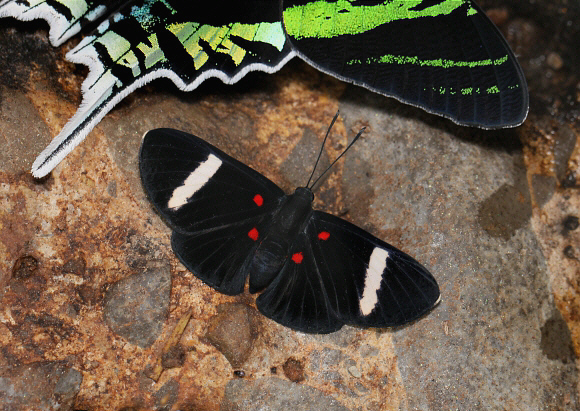 Melanis hillapana, dwarfed by the moth Urania leilus, Satipo, Peru – Adrian Hoskins
Melanis hillapana, dwarfed by the moth Urania leilus, Satipo, Peru – Adrian Hoskins
Introduction
The name Melanis refers to the melanic pigment of the black scales which cover the distinctively shaped wings of all members of this genus. Many Melanis species are marked with orange borders on the hindwings, and / or similarly coloured diagonal bands on the forewings. In some species the apex of the forewings is orange, and in others there are large red spots near the base of the wings.
There are 27 known members in the genus. One particularly attractive species, M. pixe, has a range extending from Mexico to Panama, but the majority of species are found in the Andes mountains, or in the Amazonian lowlands.
Melanis hillapana is found in Brazil, Peru and Bolivia. It can be confused with electron but the latter has a cream band on the forewings replacing the pure white band of hillapana.
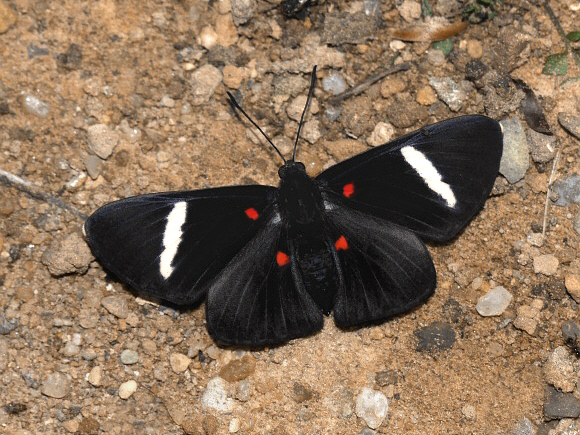 Melanis hillapana, Satipo, Peru – Adrian Hoskins
Melanis hillapana, Satipo, Peru – Adrian Hoskins
Habitats
This species inhabits pre-montane rainforest and cloudforest at altitudes between about 200-1200m. Melanis hillapana flies throughout the year but is commonest in the early part of the dry season.
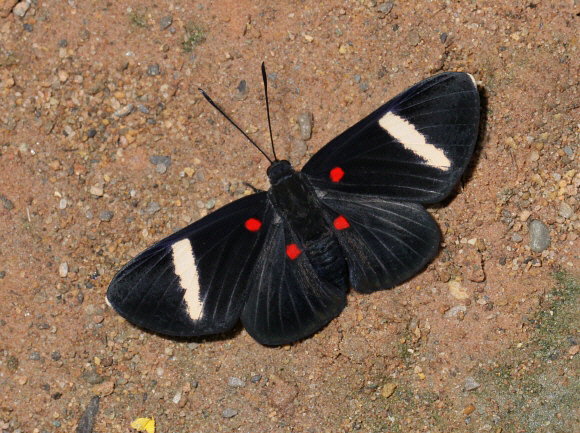 Melanis hillapana, Satipo, Peru – Adrian Hoskins
Melanis hillapana, Satipo, Peru – Adrian Hoskins
Lifecycle
I have no information specific to hillapana but the lifecycle is likely to be similar to that of other Melanis species : The larvae are hairy, and feed gregariously on the leaves of trees in the family Leguminosae. The pupae are said to be formed in clusters on tree trunks.
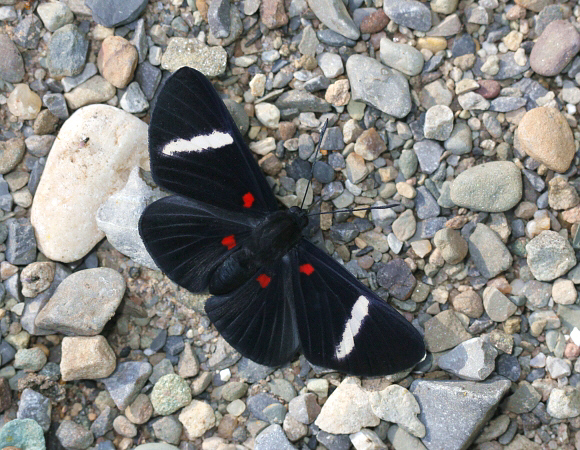 Melanis hillapana, Satipo, Peru – Adrian Hoskins
Melanis hillapana, Satipo, Peru – Adrian Hoskins
Adult behaviour
Males of this species are usually seen singly or in very low numbers, visiting damp sand or rocks from which they imbibe mineralised moisture. They hold their wings fully or almost fully outspread while feeding. Males of several Melanis species are reported to fly around the canopy of Samanea trees ( Leguminosae ) in search of females. Females nectar at Inga, Cordia and Albizia.
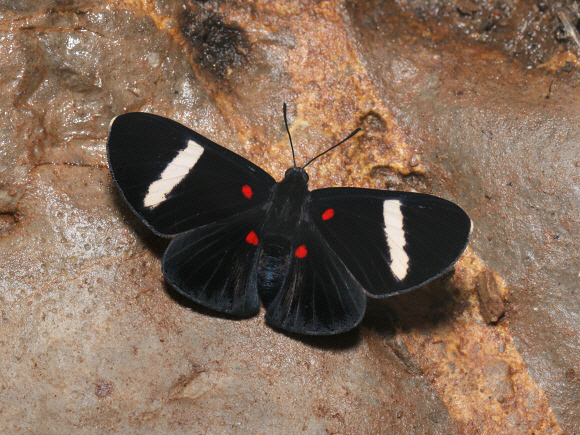
Melanis hillapana, Satipo, Peru – Adrian Hoskins
